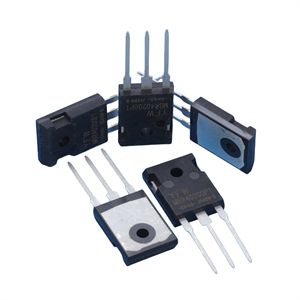Date:2024-10-11 Categories:Product knowledge Hits:304 From:Guangdong Youfeng Microelectronics Co., Ltd
Taking our most common power supply as an example, the configured voltage is 5 volts and the current is 2 amperes. Under normal circumstances, diodes are connected in series in a circuit to protect the downstream circuit from damage caused by reverse power supply. However, due to the significant voltage drop across the diode, this will result in a significant increase in energy loss.
We know that Schottky diodes perform better in this situation because of their lower voltage drop, which can reduce energy loss. Although the performance of Schottky diodes has improved, they may still have a significant impact on circuits, especially when the power supply voltage is relatively low.
So, we need to choose a suitable diode type and power configuration based on specific circuit application scenarios and requirements to ensure optimal performance and stability of the circuit.
The combination of reverse diodes and fuses can achieve low losses when the circuit is working normally. But when the power supply is reversed, electricity flows through the diode, which approaches a short circuit and causes the fuse in the circuit to melt, thus protecting the circuit.
However, after the reverse connection occurs, both the diode and fuse need to be replaced because the device has already blown, which greatly increases maintenance costs. In addition, when the input is reversed, a certain negative pressure will be generated, and the components of the downstream circuit may still be damaged. Therefore, other measures need to be taken to protect the downstream circuit equipment.
MOS anti reverse circuit
This circuit uses PMOS to prevent reverse connection, which utilizes the internal parasitic diode of PMOS to protect the subsequent circuit. When the input power supply is positive, the parasitic diode is conductive, causing the source voltage to also increase. At this time, the gate voltage is about equal to the negative terminal voltage of the power supply, which will cause the PMOS to conduct.
Because the internal resistance of PMOS after conduction is usually within the range of a few milliohms, its conduction loss is much lower than that when using diodes.
When the input power is reversed, the parasitic diode will turn off, causing the gate voltage to be 0V, thus turning off the PMOS and causing the voltage of the downstream device to drop to 0V. In this way, the downstream components will not be damaged due to reverse power supply connection. So, this very basic PMOS anti reverse circuit can play a very important role in circuit protection. Low internal resistance, low voltage drop loss, and also protects the downstream circuit.
matters needing attention
In order to better and more effectively protect the circuit, we need to choose a PMOS with appropriate Vds and Vgs withstand voltage values in the anti reverse circuit of PMOS. Also, choosing a PMOS model with lower internal resistance can further reduce conduction losses.
The power consumption and heat dissipation area on PMOS are of great significance for the stability and reliability of the circuit. So, we should choose the appropriate model and specifications for PMOS so that it will not experience overheating or other adverse effects during normal operation. Therefore, in order to ensure the stability and reliability of the circuit, we should also consider appropriate heat dissipation of PMOS during circuit design. For example, increasing the heat dissipation area.

Previous: Classification, Structure, and Principle of MOSFET
Next: Using voltage inspection method to quickly locate fault points in integrated circuits